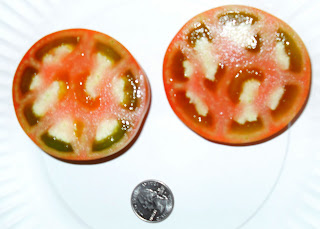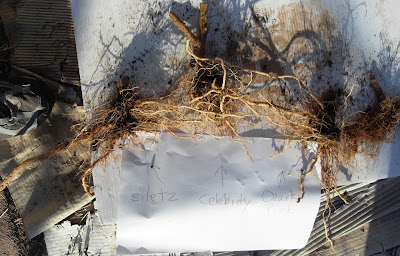 |
| Better Boy - A Hybrid Variety |
When first starting with tomatoes I bought starts from a local grocery and hardware store. Early Gird, Better Boy, and First Lady 2 were some of the first hybrid tomato varieties I tried. Each cultivar (specific vegetable variety) did okay but not great. Better Boy seemed to take the heat and be disease resistant. I was able to produce nice looking plants but had some difficulty in producing the anticipated quantity and size of tomatoes. Not many tomato varieties do well here in Tucson. Perhaps it is because we hardly ever see weather between 70 and 90 degrees F. My desire to grow hybrid tomato varieties decreased the more I realized that I could not grow “true” fruit using hybrid tomato seed. After learning this I decided to pursue a more sustainable approach and limit my growing to open-pollinated tomato cultivars. In spring of 2009 I planted Glacier, Cold Set, Fireworks, Zhezha, Super Sioux, Buckbee’s 50 day, and Neptune. Most of the varieties did poorly. Glacier and Buckbee’s 50 day couldn’t take the heat though Buckbee’s 50 day did better on fruit production and disease resistance, cold set can grow fast but can’t take the cold, when disease approached Fireworks went up in smoke, Zhezha produced 1-2 small fruits, Super Sioux could take the heat but produced little, Neptune could take the heat very well but produced little to average. Zhezha and Neptune were the only 2 determinates I grew. They are both true determinates- dying immediately after producing their 1 crop of fruit. Even if I put a plant on the east side of a structure the unforgiving sun quickly taught me that any plants in exposed pots will have their roots pasteurized by about 2 pm in the afternoon- if not sooner.
 |
| Neptune can take the heat! |
 |
| Buckbee's 50 Day - An all around good variety |















































